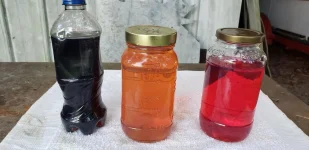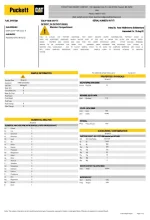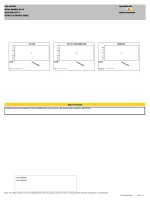Play'N Hooky Too
Well-known member
- Joined
- Jun 27, 2016
- Messages
- 224
- Status
- OWNER - I own a Hatteras Yacht
- Hatteras Model
- 46' CONVERTIBLE-Series I (1974 - 1981)
Short Version: I'm wondering how it might be possible that I wound up with engine oil in my diesel fuel. (Detroit 8V71TI Engines)
Long Version: A couple of weeks ago we decided to head out for a day trip of fishing. The 46C has three tanks, the two mains under the cockpit that hold 200 gallons each and the mid tank that holds 250. A few years ago we filled up all three but since most of our trips since that time have only been for a day or maybe an overnighter, we never touched the mid tank and have just been running on the two mains and refilling those. So with diesel being close to $6, the two mains being down to less than half, and our planned trip being only for a short day, we thought it was time to use up some of that mid tank reserve.
We started out on the mains and about half-way to the pass we switched the fuel valves over to draw from the mid tank. After about a minute the engines began to push out some thick smoke, began missing and died. (Oh crap!) We switched back to the mains and restarted the engines with no problem. Tried switching them again at idle and got the same result. Without enough fuel in the mains to last us for the day we aborted and went back to the marina.
I got my fuel wagon, bit the bullet, and went to the local fuel farm for a load of diesel. We pumped that into the main tanks and resumed our trip the next morning. We had an uneventful trip, everything ran fine, filled the fish box with some nice yellow edge grouper and tile fish. On the way back in I noticed that we were getting some soot on the transom and the surfaces at the rear of the cockpit. By the time we got back to the marina the transom had a pretty heavy coating of soot. We never really saw any smoke from the engines, although the exhaust smell was a little more noticeable than usual in the cockpit at times. I suspected that we had probably sucked some nasty crap out of the mid tank when we attempted to switch over during our aborted trip.
Back at the dock I checked the Racors and they were completely opaque. I drained them and replaced the filters. The previous owner had installed a transfer pump in the engine room to pump fuel from the mid tank. Using that I pulled a jar of fuel out of the mid tank to see if it looked cruddy. It was clear but had more of an orange color than the typical bright red of off-road diesel. I suspected that we had likely mixed in some regular green diesel at some point, which would account for the color, but otherwise the fuel looked fine. I have a small dedicated fuel pump installed in the engine room that I use to refill the Racors and prime the engines after I change the primary filter elements. It pulls from the port main fuel tank. When I began refilling the Racors I noticed that they were completely opaque again!? I pumped about a gallon of fuel out into a jug and it was very dark almost completely black. Fuel from the starboard main tank was the same way.
At this point we began investigating to see what was going on. We found that all of the hoses from the mid tank had been removed, the pick-up ports and return lines had been capped off at the tank (except for the one attached to the transfer pump) and the connections for the feed and return lines at the fuel valve gallery had also been capped off. The only way to get fuel out of the mid tank is to manually pump it out using the transfer pump the previous owner(s) installed in the engine room. So essentially, when I switched the valves over to draw from the mid tank during our aborted trip, it dead-headed the fuel systems for both engines.
Below is a picture of my fuels. To rule out the possibility that we gotten a bad load of fuel, I pumped some of the residual fuel out of my fuel trailer. That's it on the right. The center jar is the fuel from the mid tank and the one on the left is the fuel from the port main tank. The starboard tank is the pretty much the same. There is about 75 to 100 gallons of this left in each of the two main tanks.

The engines don't seem to have any issues running on the "dark fuel" (other than the soot). I pulled the dipsticks on both engines. The oil level is right were it usually is after running them for about 10 hours and the consistency is dark and oily, just like it is when it needs to be changed soon.
So the question is, how did I wind up with engine oil in my diesel?
Thoughts?
Thanks
-Alan
Long Version: A couple of weeks ago we decided to head out for a day trip of fishing. The 46C has three tanks, the two mains under the cockpit that hold 200 gallons each and the mid tank that holds 250. A few years ago we filled up all three but since most of our trips since that time have only been for a day or maybe an overnighter, we never touched the mid tank and have just been running on the two mains and refilling those. So with diesel being close to $6, the two mains being down to less than half, and our planned trip being only for a short day, we thought it was time to use up some of that mid tank reserve.
We started out on the mains and about half-way to the pass we switched the fuel valves over to draw from the mid tank. After about a minute the engines began to push out some thick smoke, began missing and died. (Oh crap!) We switched back to the mains and restarted the engines with no problem. Tried switching them again at idle and got the same result. Without enough fuel in the mains to last us for the day we aborted and went back to the marina.
I got my fuel wagon, bit the bullet, and went to the local fuel farm for a load of diesel. We pumped that into the main tanks and resumed our trip the next morning. We had an uneventful trip, everything ran fine, filled the fish box with some nice yellow edge grouper and tile fish. On the way back in I noticed that we were getting some soot on the transom and the surfaces at the rear of the cockpit. By the time we got back to the marina the transom had a pretty heavy coating of soot. We never really saw any smoke from the engines, although the exhaust smell was a little more noticeable than usual in the cockpit at times. I suspected that we had probably sucked some nasty crap out of the mid tank when we attempted to switch over during our aborted trip.
Back at the dock I checked the Racors and they were completely opaque. I drained them and replaced the filters. The previous owner had installed a transfer pump in the engine room to pump fuel from the mid tank. Using that I pulled a jar of fuel out of the mid tank to see if it looked cruddy. It was clear but had more of an orange color than the typical bright red of off-road diesel. I suspected that we had likely mixed in some regular green diesel at some point, which would account for the color, but otherwise the fuel looked fine. I have a small dedicated fuel pump installed in the engine room that I use to refill the Racors and prime the engines after I change the primary filter elements. It pulls from the port main fuel tank. When I began refilling the Racors I noticed that they were completely opaque again!? I pumped about a gallon of fuel out into a jug and it was very dark almost completely black. Fuel from the starboard main tank was the same way.
At this point we began investigating to see what was going on. We found that all of the hoses from the mid tank had been removed, the pick-up ports and return lines had been capped off at the tank (except for the one attached to the transfer pump) and the connections for the feed and return lines at the fuel valve gallery had also been capped off. The only way to get fuel out of the mid tank is to manually pump it out using the transfer pump the previous owner(s) installed in the engine room. So essentially, when I switched the valves over to draw from the mid tank during our aborted trip, it dead-headed the fuel systems for both engines.
Below is a picture of my fuels. To rule out the possibility that we gotten a bad load of fuel, I pumped some of the residual fuel out of my fuel trailer. That's it on the right. The center jar is the fuel from the mid tank and the one on the left is the fuel from the port main tank. The starboard tank is the pretty much the same. There is about 75 to 100 gallons of this left in each of the two main tanks.

The engines don't seem to have any issues running on the "dark fuel" (other than the soot). I pulled the dipsticks on both engines. The oil level is right were it usually is after running them for about 10 hours and the consistency is dark and oily, just like it is when it needs to be changed soon.
So the question is, how did I wind up with engine oil in my diesel?
Thoughts?
Thanks
-Alan
Last edited:



